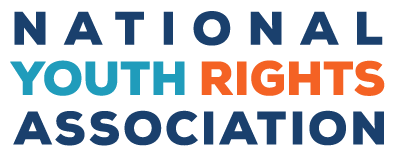Corporal punishment is the use of physical force to cause pain or harm to someone accused of breaking a law or rule. In schools in the United States, forms of corporal punishment include spanking or slapping, hitting with weapons such as paddles, rulers, or belts, and forcing students to perform physically painful activities such as crawling over rough terrain or excessive running.
Students can be potential victims of corporal punishment at any age until we graduate high school. Corporal punishment violates our right to safety, bodily integrity, due process, and our right to be free from cruel and unusual punishment. Corporal punishment is not only physically hurtful, but it can also cause emotional damage, humiliation, and shame. It often leads to academic disengagement, higher dropout rates, and impairs academic progress. We strongly believe no one should be subjected to physical punishment and that the law needs to protect everyone equally regardless of age.
Corporal Punishment and the Law
Throughout U.S. history, corporal punishment has been used against both adults and children as a way to punish and control negative behavior. However, only adults are currently protected from the practice. Corporal punishment cannot be used in sentencing – Delaware was the last state to use it in 1952 – and the practice has been illegal in prisons since in 1968. This was a result of the court case Jackson v. Bishop (Eighth Circuit, 1968) where the court concluded “that the use of the strap in the penitentiaries of Arkansas is punishment which, in this last third of the 20th century, runs afoul of the Eighth Amendment; that the strap’s use, irrespective of any precautionary conditions which may be imposed, offends contemporary concepts of decency and human dignity and precepts of civilization which we profess to possess; and that it also violates those standards of good conscience and fundamental fairness.”
Unfortunately, the Supreme Court did not feel the same way when a case involving corporal punishment against young people came before them. In the case of Ingraham v. Wright (U.S. Supreme Court, 1977), two high school students, James Ingraham and Roosevelt Andrews, sued their school alleging they were deprived of their Constitutional rights after being struck with a paddle. The Court concluded that the Eighth Amendment was “inapplicable” in school settings as it has traditionally been used to protect those convicted of crimes and not students. However, Justice White, along with Justices Brennan, Marshall, and Stevens, dissented, noting that the purpose of the Eighth Amendment could be applied to students as it does not expressly mention that it only applies to criminals. The goal of the Eighth Amendment, they argued, is to prohibit punishments deemed inhumane, no matter how grievous the offense committed and therefore, similar punishments cannot be logically imposed on persons guilty of minor infractions, such as breaches of school discipline.
Legal Status of Corporal Punishment
Currently, corporal punishment in schools is banned in 128 countries, but is still legal in public schools in eighteen U.S. states. It is also legal in private schools in every state except for Iowa and New Jersey.
The Prevalence of Corporal Punishment
The rate at which corporal punishment occurs in schools varies from state to state – in some states the practice is virtually non-existent and illegal; in others, thousands of young people are struck every year.
Every two years, the Department of Education asks every public school in the country to report on the number of students it has physically punished during the previous year. Analysis of this data shows that males, young persons of color and students diagnosed with a disability are disproportionately more likely to be the victims of this abuse by their teachers and school administrators.
Number of students that experienced corporal punishment in public schools 2013-2014
State reported using corporal punishment on 5% of students
Between 1% and 5% of students
Between .1% and 1% of students
State reported using corporal punishment on at least one student
State reported no incidents of corporal punishment
Number of total students who received corporal punishment during the 2013-2014 school year
| Mississippi | 24,882 | Ohio | 117 |
| Texas | 18,367 | South Carolina | 81 |
| Alabama | 18,066 | North Carolina | 77 |
| Arkansas | 14,590 | Kentucky | 74 |
| Georgia | 7,893 | District of Columbia | 17 |
| Tennessee | 6,881 | Michigan | 17 |
| Oklahoma | 6,348 | Idaho | 7 |
| Louisiana | 3,303 | New York | 6 |
| Missouri | 3,173 | Arizona | 6 |
| Florida | 1,936 | Kansas | 3 |
| Indiana | 212 |
The map and table shows the rate and number of young people who were struck in a school setting during the 2013-2014 school year. It does not show the number of times hitting actually occurred, which is certainly much higher. It also does not reflect the prevalence of corporal punishment in private schools, where it is legal in all states except for two. The Department of Education also reports several cases of corporal punishment in states where the practice is illegal, such as Ohio, Michigan, New York, Kansas, and the District of Columbia. However, even in instances where corporal punishment has been administered illegally or against parents’ written requests, it is very difficult to hold the perpetrators accountable.
What you can do
Things to Remember
You can get information on the use of corporal punishment in your school or district. The Office of Civil Rights in the Department of Education tracks the number of students who have been hit at school.








